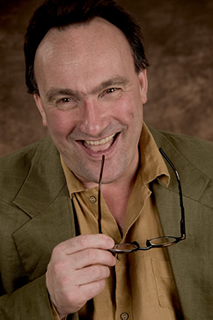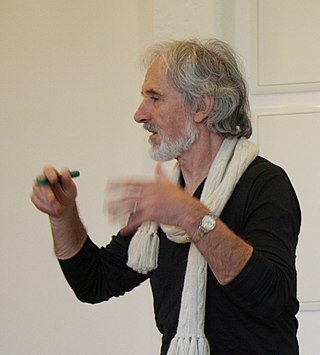Psychotherapy is the use of psychological methods, particularly when based on regular personal interaction, to help a person change behavior, increase happiness, and overcome problems. Psychotherapy aims to improve an individual's well-being and mental health, to resolve or mitigate troublesome behaviors, beliefs, compulsions, thoughts, or emotions, and to improve relationships and social skills. Numerous types of psychotherapy have been designed either for individual adults, families, or children and adolescents. Certain types of psychotherapy are considered evidence-based for treating some diagnosed mental disorders; other types have been criticized as pseudoscience.

Music therapy, an allied health profession, "is the clinical and evidence-based use of music interventions to accomplish individualized goals within a therapeutic relationship by a credentialed professional who has completed an approved music therapy program." It is also a vocation, involving a deep commitment to music and the desire to use it as a medium to help others. Although music therapy has only been established as a profession relatively recently, the connection between music and therapy is not new.
Dance/movement therapy (DMT) in USA and Australia or dance movement psychotherapy (DMP) in the UK is the psychotherapeutic use of movement and dance to support intellectual, emotional, and motor functions of the body. As a modality of the creative arts therapies, DMT looks at the correlation between movement and emotion.
Focusing is an internally oriented psychotherapeutic process developed by psychotherapist Eugene Gendlin. It can be used in any kind of therapeutic situation, including peer-to-peer sessions. It involves holding a specific kind of open, non-judging attention to an internal knowing which is experienced but is not yet in words. Focusing can, among other things, be used to become clear on what one feels or wants, to obtain new insights about one's situation, and to stimulate change or healing of the situation. Focusing is set apart from other methods of inner awareness by three qualities: something called the "felt sense", a quality of engaged accepting attention, and a researched-based technique that facilitates change.
The expressive therapies are the use of the creative arts as a form of therapy, including the distinct disciplines expressive arts therapy and the creative arts therapies. The expressive therapies are based on the assumption that people can heal through the various forms of creative expression. Expressive therapists share the belief that through creative expression and the tapping of the imagination, people can examine their body, feelings, emotions, and thought process.

Art therapy is a distinct discipline that incorporates creative methods of expression through visual art media. Art therapy, as a creative arts therapy profession, originated in the fields of art and psychotherapy and may vary in definition. Art therapy encourages creative expression through painting, drawing, or modelling. It may work by providing a person with a safe space to express their feelings and allow them to feel more in control over their life.
Somatic Experiencing (SE) is a form of alternative therapy aimed at treating trauma and stress-related disorders, such as PTSD. The primary goal of SE is to modify the trauma-related stress response through bottom-up processing. The client's attention is directed toward internal sensations,, rather than to cognitive or emotional experiences. The method was developed by Peter A. Levine.
Process art is an artistic movement where the end product of art and craft, the objet d’art, is not the principal focus; the process of its making is one of the most relevant aspects if not the most important one: the gathering, sorting, collating, associating, patterning, and moreover the initiation of actions and proceedings. Process artists saw art as pure human expression. Process art defends the idea that the process of creating the work of art can be an art piece itself. Artist Robert Morris predicated “anti-form”, process and time over an objectual finished product.

Although modern, scientific psychology is often dated from the 1879 opening of the first psychological clinic by Wilhelm Wundt, attempts to create methods for assessing and treating mental distress existed long before. The earliest recorded approaches were a combination of religious, magical and/or medical perspectives. Early examples of such psychological thinkers included Patañjali, Padmasambhava, Rhazes, Avicenna and Rumi.

A subpersonality is, in humanistic psychology, transpersonal psychology and ego psychology, a personality mode that activates to allow a person to cope with certain types of psychosocial situations. Similar to a complex, the mode may include thoughts, feelings, actions, physiology and other elements of human behavior to self-present a particular mode that works to negate particular psychosocial situations. American transpersonal philosopher Ken Wilber and English humanistic psychologist John Rowan suggested that the average person has about a dozen subpersonalities.
Roy Hart was a South African actor and vocalist noted for his highly flexible voice and extensive vocal range that resulted from training in the extended vocal technique developed and taught by the German singing teacher Alfred Wolfsohn at the Alfred Wolfsohn Voice Research Centre in London between 1943 and 1962.
Supportive psychotherapy is a psychotherapeutic approach that integrates various therapeutic schools such as psychodynamic and cognitive-behavioral, as well as interpersonal conceptual models and techniques.
Paul J. Moses was a clinical professor in charge of the Speech and Voice Section, Division of Otolaryngology at the Stanford University School of Medicine, San Francisco, where he conducted research into the psychology of the human voice, seeking to show how personality traits, neuroses, and symptoms of mental disorders are evident in the vocal tone or pitch range, prosody, and timbre of a voice, independent of the speech content.
The Alfred Wolfsohn Voice Research Centre was a project established to investigate the therapeutic and artistic potential of vocal expression. The Centre was founded by Alfred Wolfsohn in Berlin during 1935 and re-situated in London during 1943, where he and his contemporaries and successors developed principles and practices that provided the foundations for the use of an extended vocal technique. This technique allows vocalists to extend their vocal range and flexibility beyond that usually heard in speech or song.
Audio therapy is the clinical use of recorded sound, music, or spoken words, or a combination thereof, recorded on a physical medium such as a compact disc (CD), or a digital file, including those formatted as MP3, which patients or participants play on a suitable device, and to which they listen with intent to experience a subsequent beneficial physiological, psychological, or social effect.

Paul Newham is a retired British psychotherapist known for developing techniques used in psychology and psychotherapy that make extensive use of the arts to facilitate and examine two forms of human communication: the interpersonal communication through which people speak aloud and listen to others, and the intrapersonal communication that enables individuals to converse silently with themselves. His methods emphasise the examination of traumatic experiences through literary and vocal mediums of expression, including creative writing, storytelling, and song. He is cited by peers as a pioneer in recognition of his original contribution to the expressive therapies.

Paolo Knill was a Swiss scientist, artist, and therapist. Knill was a professor at Lesley University in Cambridge, Massachusetts, where he helped to found their graduate program in Expressive Arts Therapy. In 1994, Knill founded the European Graduate School in Saas-Fee, Switzerland.
Cathy Malchiodi is an American licensed professional mental health counselor, registered expressive arts therapist, and art therapist, best known for her work on trauma-informed treatment in expressive arts therapy.

Art-based research is a mode of formal qualitative inquiry that uses artistic processes in order to understand and articulate the subjectivity of human experience.
Natalie Rogers (1928–2015) was an early contributor to the field of humanistic psychology, person centered psychology, expressive arts therapy, and the founder of Person-Centered Expressive Arts. This combination of the arts with psychotherapy is sometimes referred to by Rogers as The Creative Connection. The daughter of Carl Rogers, one of the founders of humanistic psychology, she established her own center, the Person-Centered Expressive Therapy Institute. Her writings, teachings, and practice introduced many to the power of creative arts for healing both within and outside the therapeutic setting.






